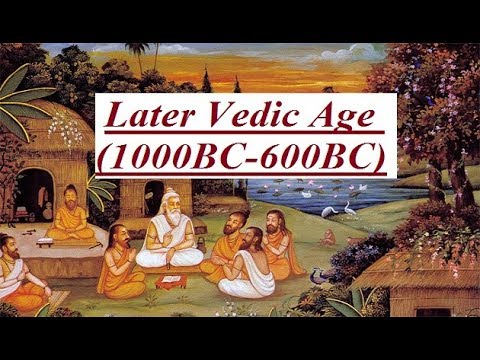History Notes On – Later Vedic Period – For W.B.C.S. Examination.
ইতিহাস নোট – বৈদিক পরবর্তী সময়কাল – WBCS পরীক্ষা।
During the Later Vedic Age (1000-600 B.C.) the Aryans thoroughly subdued the fertile plains watered by Rivers like: Yamuna, Ganges and Sadanira.Continue Reading History Notes On – Later Vedic Period – For W.B.C.S. Examination.
Chronology
The period of 1500 B.C and 600 B.C was divided into Early Vedic Age (Vedic Period) and Later Vedic Age.
• Vedic Period: 1500 B.C- 1000 B.C; It was in this period, Aryans were supposed to have invaded India.
• Later Vedic Period: 1000 B.C- 600 B.C
Characteristics
I. Later Vedic Compositions
• This period is based on the Vedic texts compiled after the Veda.
• The collection of Vedic hymns or mantras is called the Samhita.
• Since the hymns were sung, the Veda was set to tune and was then named the Sama Veda Samhita.
• Two more collections were composed during this period: the Yajur Veda Samhita and the Atharva Veda Samhita.
• The hymns in the Yajur Veda are accompanied by rituals that reflect the socio-political structure of the society.
• The Atharva Veda contains charms and spells that were supposed to ward off evil. They reflected the beliefs and practices of the non-Aryans.
• The Samhitas were followed by a series of texts called Brahmanas which explained the social and religious aspects of rituals.
II. The Painted Grey Ware
• Excavation in the upper Gangetic basin has led to the discovery of earthen bowls and dishes made of painted grey pottery.
• These wares are part of the same area and the same period (circa 1000-600 BC) as the post-Vedic compilations.
• Thus, these sites are called Painted Grey Ware (PGW) sites.
• These sites can be found in western Uttar Pradesh and adjoining areas of Punjab, Haryana and Rajasthan.
III. Iron Phase Culture
• Iron gained prominence from around 1000 BC and was also found inside burials in Pakistan and Baluchistan.
• Iron was used to make weapons such as arrow-heads and spear- heads in Uttar Pradesh from around 800 BC.
• The terms ‘Syama’ or ‘Krishna ayas’ are used to refer to iron in the later Vedic texts.
• Although agriculture was primitive, it was widespread and the prevalence of rice and wheat grew in the later Vedic age.
• Introduction of metals led to the rise of diverse arts and crafts. Occupations like those of smelters, iron and copper smiths and carpenters came into existence.
• There were four types of pottery in the later Vedic age: black-and-red ware, black-slipped ware, painted grey ware, and red ware.
Please subscribe here to get all future updates on this post/page/category/website


 Toll Free 1800 572 9282
Toll Free 1800 572 9282  mailus@wbcsmadeeasy.in
mailus@wbcsmadeeasy.in



















































































































